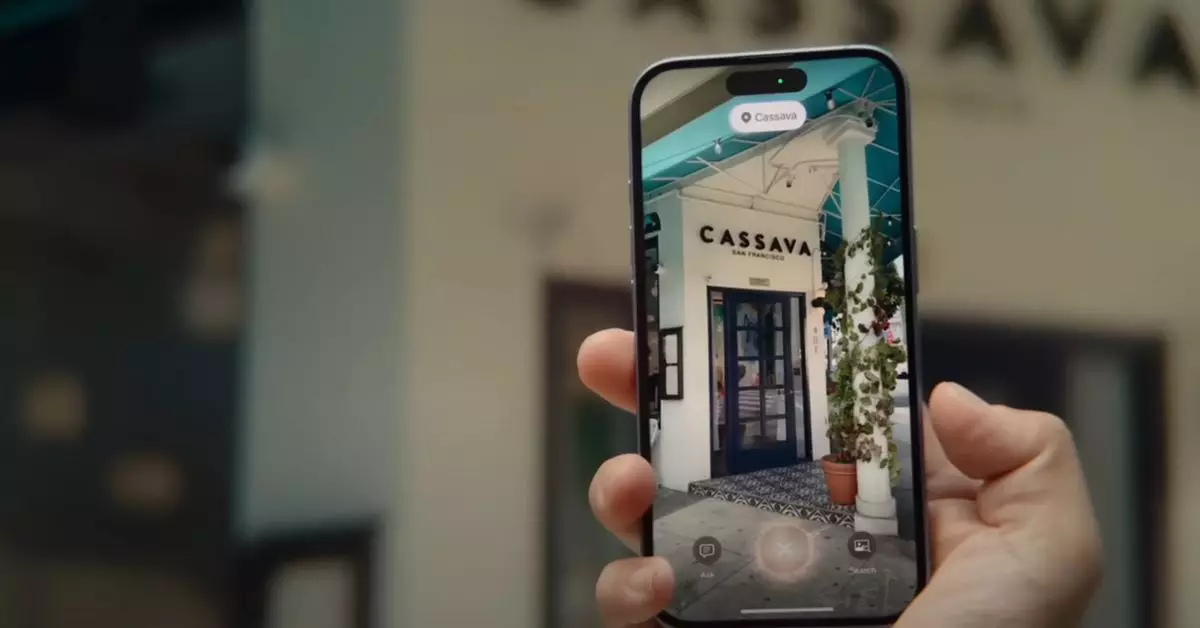Apple’s recent unveiling of the iPhone 16 brought with it a host of exciting features, but none was as captivating as the “Visual Intelligence” tool. This innovative technology allows users to interact with their surroundings in a seamless manner, utilizing the phone’s camera to gather information about the environment. Whether identifying the specific breed of a dog, extracting event details from a flyer, or even conducting general inquiries about nearby objects, Visual Intelligence serves as a glimpse into the future of how we may engage with technology. This remarkable feature not only enhances the user experience on the iPhone but also offers a tantalizing peek into what Apple might be planning for its next big leap: augmented reality (AR) glasses.
One of the key aspects of Visual Intelligence lies in its hands-free potential for future devices. Imagine a pair of AR glasses equipped with similar functionality. Instead of fumbling through a phone to retrieve information, users could simply gaze at a restaurant and ask questions, receiving instant feedback through their glasses. Such advancements are not merely speculative; they reflect a natural progression in digital technology aimed at elevating user experience. As visual computing evolves, we can anticipate that features like Visual Intelligence could be integrated into AR platforms, making everyday interactions more intuitive.
Meta has already made strides in the development of AR glasses that leverage artificial intelligence for practical applications. Their technology has shown promising outcomes in recognizing objects and environments, setting a benchmark for user engagement in augmented spaces. Should Apple choose to enter this arena, it is reasonable to expect that their offering will have a higher level of polish, integrating smoothly with the expansive Apple ecosystem. The inherent advantage of Apple’s ecosystem is its ability to integrate various applications, personal data, and user contexts, which would further enhance the utility of Visual Intelligence in AR glasses.
While discussions surrounding Apple’s Vision Pro have circulated widely, the headset primarily caters to virtual reality experiences rather than a true augmented reality. However, it serves as an essential stepping stone toward the eventual introduction of AR glasses. As the Vision Pro showcases Apple’s dedication to visual technologies, there remains an ongoing speculation regarding the release timeline for dedicated AR glasses. Reports suggest a potential launch year of 2027, although many insiders believe that the technological readiness may lag behind this timeline.
Despite these uncertainties, Apple is undoubtedly laying the groundwork for future developments. Refinements in software, such as the iterative improvements seen in Visual Intelligence, will be vital as the company transitions toward AR-specific products. Allowing for prolonged testing and enhancement of these features provides Apple with the edge required to stay competitive in a burgeoning market.
The race for AR supremacy is heating up with major players like Meta, Snap, Google, and Qualcomm making significant investments and advancements in this field. Each company is exploring unique approaches to AR, setting the stage for a competitive landscape that stimulates innovation. In this environment, Apple’s entry into AR glasses could pivot around features like Visual Intelligence, not only to distinguish itself but to capture the interest of users seeking intuitive technology.
As AR technology becomes increasingly integrated into our daily lives, the potential of Visual Intelligence will play a central role in shaping the user experience. However, before Apple introduces AR glasses, it is paramount that Visual Intelligence excels on the iPhone, acting as the foundation upon which their future AR aspirations will be built.
Apple’s Visual Intelligence feature is more than just a novel addition to the iPhone 16; it represents a critical early step toward the company’s potential for AR integration. As Apple continues to refine and expand upon this technology, it becomes evident that the future of AR glasses may not be as distant as once believed. With a solid foundation in Visual Intelligence, Apple appears poised to venture into this new frontier, further shaping the landscape of augmented reality and redefining the ways we interact with the world around us.

